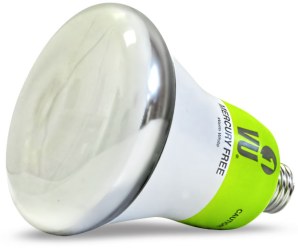
Red Dress: Belongs to Julia Fischer, soloist last night in an absolutely transcendent performance of the Beethoven Violin Concerto, with Yuri Temirkanov and the St. Petersburg Philharmonic at the Ken Cen. She managed to be noble, elegant, energetic, engaged, even playful…and at all times serenely musical.
In my Concert Preview for her performance I quoted liberally from the review in the IonArts blog from Fischer’s performance with Temirkanov and the Baltimore Symphony Orchestra in May of 2006. It all pretty much applies to what what we heard at the Kennedy Center, too…
What Julia Fischer chose to play with the BSO was no less a work than the Beethoven concerto: not a razzle-dazzle piece, the flash of which is to blind the audience and stun them into happy submission, but a work that demands foremost a thinking player’s approach, lest it fail to take off. Technical perfection and bravura playing can still produce a dud (as Anne Sofie Mutter has been happy to prove with two recordings) – conception and a sense of the complete work at every instant are more important. With her ability to place emotional peaks into refined playing, with her nicely developing tone – never shy, not too big – Ms. Fischer gave this concerto both: the nobility and excitement it needs without veering either into aloof coldness on one side or showy gypsy fiddling on the other. And while the “Beethoven Concerto against Violin” can take any number of approaches, it is especially allergic to the latter.
Cutting a dashing figure in a very red dress as she did, it was not enough to detract from the sternly delicate, searing Largo, where she made the otherwise middle-of-the run, broad rendition of the work sound very special; nuances well placed called attention to the music, not her. Grace and purity abounded. Under Temirkanov’s caring hands – here was something he visibly cherished doing – the BSO performed this and the cadenza-linked last movement splendidly, even with delicacy when called upon to do so. The ripping finale topped it all off in great style. This was an example of 45 minutes of music-making as it should be – and the audience sensed it…
Fischer has yet to record the Beethoven concerto, but you get a glimpse of her in action in a YouTube video of a live television broadcast of the Brahms Violin Concerto from the Schleswig-Holstein Festival with the North German Orchestra conducted by Michael Tilson Thomas:
Red Sox: You’re going to have to bear with me for the next few days, while the Sawx are in the Series. But, especially given tonight’s pasting of the Rockies, there’s an on-point article in today’s Boston Globe (which is invariably an entertaining read in times like these) about the sudden Loss of Angst in the Nation:
Jim Lonborg, the star pitcher of the 1967 Impossible Dream team, was on the phone yesterday. He’s a dentist on the South Shore now, just about the nicest guy who ever played professional sports. Asked if anyone ever complains to him about his team not winning the heart-breaking seventh game of the World Series against the St. Louis Cardinals, he replied without hesitation: “No, never.”
“You know that old cliché,” he added, “it’s all about the journey, and that was something that was always special about any Red Sox season – what it took to get there, the different cast of characters involved.”
Nobody, especially not Lonborg, is disputing that this team is great. Pedroia and Papelbon are riotous to watch. Lowell and Varitek are two of the more thoughtful players in the game, Ortiz and Ramirez two of the most exciting.
But here’s the problem with the 2007 edition of the Boston Red Sox: There is no narrative arc. They started the season as playoff favorites. They finished the season as playoff favorites. There will be a whole lot of stunned people if they don’t win.
They don’t, in short, have a story. Maybe that’s how the Yankees do it, or the Dallas Cowboys, or the old Montreal Canadiens, but it’s not generally how we do things on Yawkey Way – at least not in 1967 or 1975 or 1986 or 2004.
Thought-provoking stuff for us grizzled vets for whom those years will always have special, and bittersweet, meaning. Interesting to note that this article was one of the most e-mailed of the day. Not that I’m complaining or anything….
PS – discovered a great website of long-time Sox fans: redsoxdiehard.com, including a comprehensive list of all-time uniform numbers. Strange but true: Certified oddballs Jimmy Piersall and Bill “Spaceman” Lee wore the same No. 37 uni for the Sox. One of my favorite of the many great lefty’s quotes: “You have two hemispheres in your brain – a left and a right side. The left side controls the right side of your body and right controls the left half. It’s a fact. Therefore, left-handers are the only people in their right minds.





